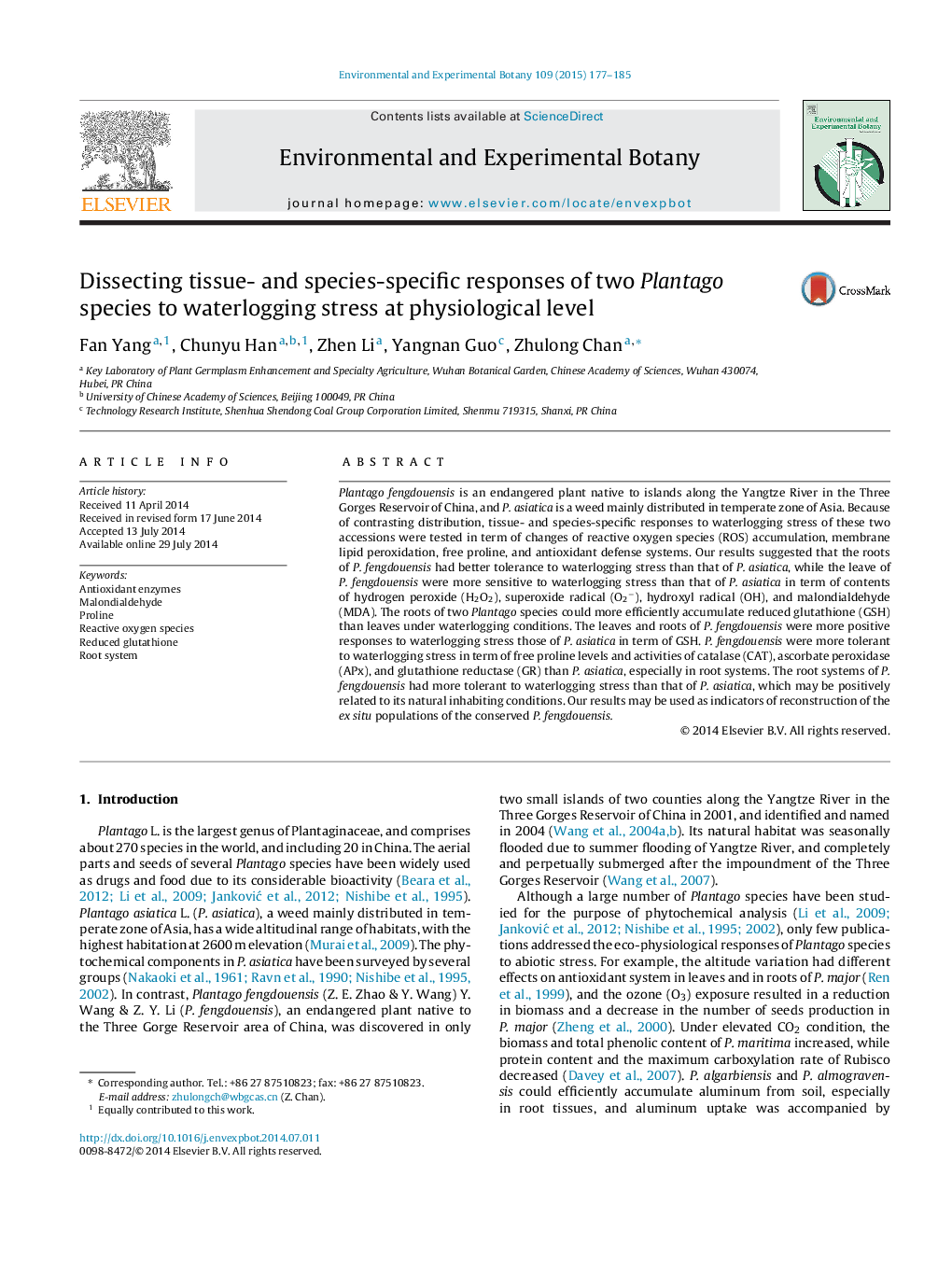| Article ID | Journal | Published Year | Pages | File Type |
|---|---|---|---|---|
| 4554331 | Environmental and Experimental Botany | 2015 | 9 Pages |
•Tissue-specific responses to waterlogging stress existed in two Plantgo species.•The leave of P. fengdouensis were more sensitive to waterlogging stress than that of P. Asiatica.•The root systems of P. fengdouensis were more tolerant to waterlogging stress than that of P. asiatica.•The waterlogging tolerance of P. fengdouensis was related to its naturally inhabiting conditions.
Plantago fengdouensis is an endangered plant native to islands along the Yangtze River in the Three Gorges Reservoir of China, and P. asiatica is a weed mainly distributed in temperate zone of Asia. Because of contrasting distribution, tissue- and species-specific responses to waterlogging stress of these two accessions were tested in term of changes of reactive oxygen species (ROS) accumulation, membrane lipid peroxidation, free proline, and antioxidant defense systems. Our results suggested that the roots of P. fengdouensis had better tolerance to waterlogging stress than that of P. asiatica, while the leave of P. fengdouensis were more sensitive to waterlogging stress than that of P. asiatica in term of contents of hydrogen peroxide (H2O2), superoxide radical (O2−), hydroxyl radical (OH), and malondialdehyde (MDA). The roots of two Plantago species could more efficiently accumulate reduced glutathione (GSH) than leaves under waterlogging conditions. The leaves and roots of P. fengdouensis were more positive responses to waterlogging stress those of P. asiatica in term of GSH. P. fengdouensis were more tolerant to waterlogging stress in term of free proline levels and activities of catalase (CAT), ascorbate peroxidase (APx), and glutathione reductase (GR) than P. asiatica, especially in root systems. The root systems of P. fengdouensis had more tolerant to waterlogging stress than that of P. asiatica, which may be positively related to its natural inhabiting conditions. Our results may be used as indicators of reconstruction of the ex situ populations of the conserved P. fengdouensis.
